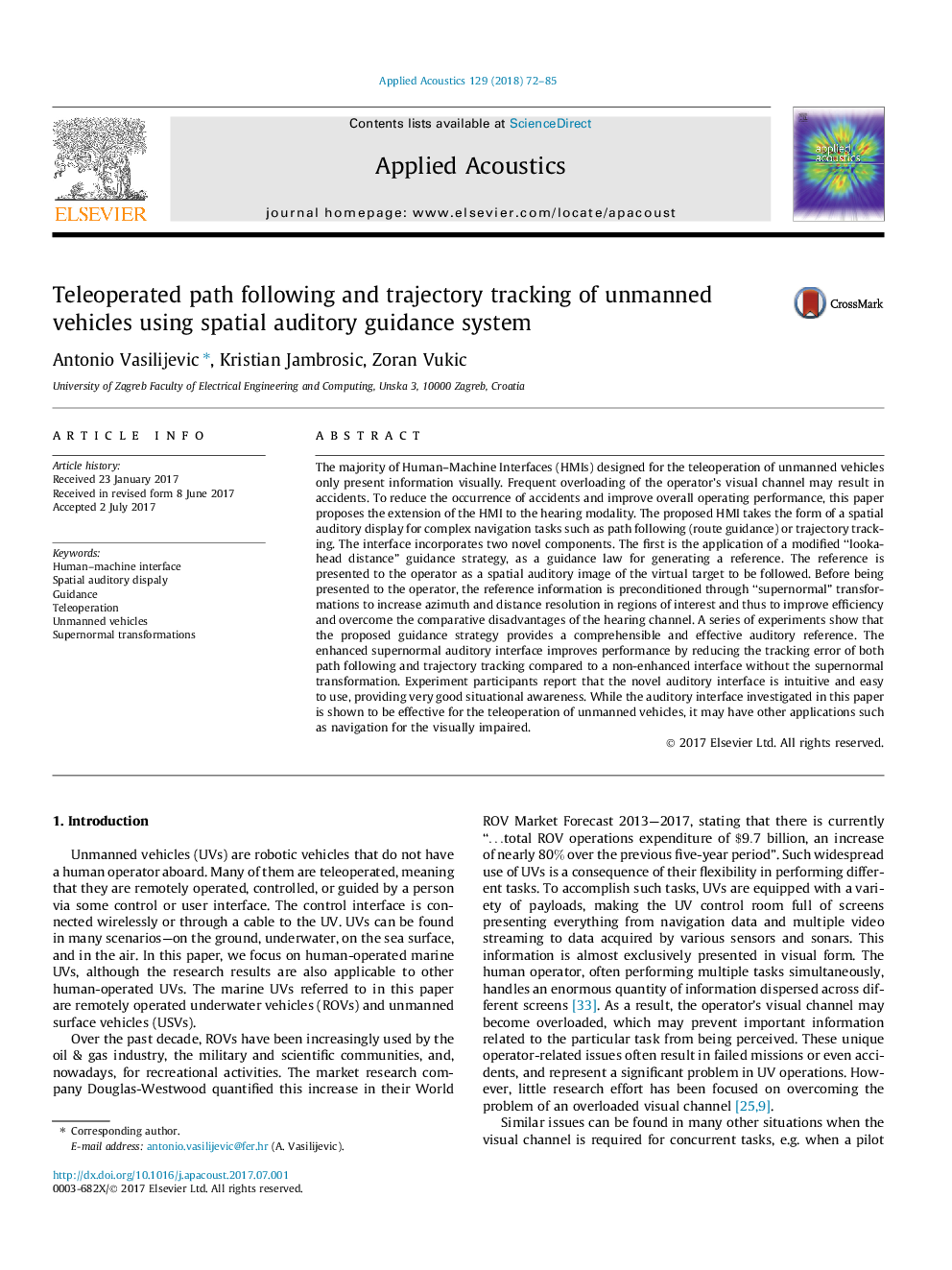| Article ID | Journal | Published Year | Pages | File Type |
|---|---|---|---|---|
| 5010743 | Applied Acoustics | 2018 | 14 Pages |
â¢Spatial auditory guidance system for complex navigation tasks is proposed.â¢Application of control theory to optimally position the guiding sound (beacon).â¢Azimuth and distance resolution is improved through supernormal transformations.â¢Experimental results showed improved navigation performance.
The majority of Human-Machine Interfaces (HMIs) designed for the teleoperation of unmanned vehicles only present information visually. Frequent overloading of the operator's visual channel may result in accidents. To reduce the occurrence of accidents and improve overall operating performance, this paper proposes the extension of the HMI to the hearing modality. The proposed HMI takes the form of a spatial auditory display for complex navigation tasks such as path following (route guidance) or trajectory tracking. The interface incorporates two novel components. The first is the application of a modified “lookahead distance” guidance strategy, as a guidance law for generating a reference. The reference is presented to the operator as a spatial auditory image of the virtual target to be followed. Before being presented to the operator, the reference information is preconditioned through “supernormal” transformations to increase azimuth and distance resolution in regions of interest and thus to improve efficiency and overcome the comparative disadvantages of the hearing channel. A series of experiments show that the proposed guidance strategy provides a comprehensible and effective auditory reference. The enhanced supernormal auditory interface improves performance by reducing the tracking error of both path following and trajectory tracking compared to a non-enhanced interface without the supernormal transformation. Experiment participants report that the novel auditory interface is intuitive and easy to use, providing very good situational awareness. While the auditory interface investigated in this paper is shown to be effective for the teleoperation of unmanned vehicles, it may have other applications such as navigation for the visually impaired.
